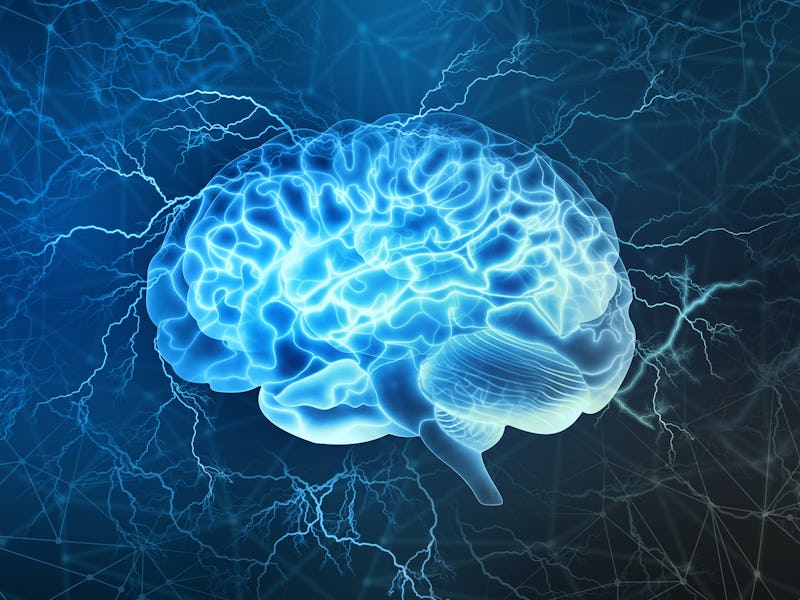Elon Musk says Neuralink could bring A.I. ‘superintelligence’ to the brain
The brain-computer linkup firm has medical applications. Musk is thinking bigger.

Beyond cortical and limbic systems, the company Neuralink could add a third layer of digital superintelligence to humans and avoid artificial intelligence enslavement, its founder Elon Musk claimed Tuesday. The brain-computer linkup firm is working to treat medical conditions using its implanted chip as early as next year, but during a podcast appearance, Musk reiterated his belief that the technology could avoid some of the worst consequences of advanced machines.
“It’s important that Neuralink solves this problem sooner rather than later, because the point at which we have digital superintelligence, that’s when we pass the singularity and things become just very uncertain,” Musk said during an interview with MIT professor Lex Fridman.
Musk was keen to note that the singularity, a hypothesized point where machines grow so advanced that humanity slips into an irreversible change, may not necessarily be good or bad. He did state, however, that “things become extremely unstable” after that point, which means Neuralink would need to achieve its human-brain linkup either before or not long after “to minimize the existential risk for humanity and consciousness as we know it.”
It’s a strong statement from Musk, par for the course for billionaire. Musk has repeatedly warned that humans would need to preemptively act to avoid A.I. outpacing the species. Alongside Neuralink, which he detailed in July, Musk has also called for government regulation. His declarations have been met with skepticism from some in the A.I. community.
Watch Musk’s full appearance below:
Neuralink: the plan to wire up brains
At the California Academy of Sciences’ Morrison Planetarium in July, Musk and a team of scientists explained how Neuralink plans to use invasive methods to measure the brain. This is opposed to non-invasive methods like hats that don’t require surgery.
Central to this is the N1 chip, a hermetically-sealed chip that measures four millimeters by four millimeters. It sits in a cylindrical package measuring eight millimeters in diameter. Each chip has 1,024 electrodes, around 100 times more than that used by systems used to treat Parkinson’s. Each electrode is five microns thick, three less than a blood cell, and can measure electrical spikes when placed 60 microns away from a neuron.
Neuralink aims to bring the implant to one human patient by the end of next year. The focus would be on patients with quadriplegia due to C1-C4 spinal cord injury. The initial setup would use four N1 chips, one by the somatic sensory cortex and three by the motor areas. It’s then wired to an inductive coil, connecting to a battery and Bluetooth that powers the system. The end result is a system that can control a smartphone or other computer system.
Neuralink's N1 chip array in action.
Neuralink: how Musk wants it to enable superintelligence
While medical applications are the initial focus, Musk has regularly voiced interest in using it to link up humans with machines.
During his appearance on Fridman’s podcast, he explained how humans currently have two systems. There’s a limbic system that drives impulses, and the cortex system that tries to control the limbic system while acting as an intelligence layer. Nobody wants to remove either layer. Musk believes that a third layer could sit on top and share a similar relationship to the first two layers.
“Perhaps there can be a tertiary layer where digital superintelligence lies,” Musk explained. “That will be vastly more intelligent than the cortex but still co-exist peacefully and in a benign manner with the cortex and limbic system.”
This, Musk has previously explained, would enable humans to keep up with machines. During an August discussion with Alibaba Group co-founder Jack Ma, Musk explained that human speech to a computer would sound like “very slow tonal wheezing…kind of like whale sounds.” Linking up the brain would offer a faster method of connection.
His plan has been met with some skepticism. Noel Sharkey, professor of robotics at the University of Sheffield, told The Telegraph in July that the idea was “nonsense.” Instead, Sharkey is keen to direct attention to areas like unjust decision making, or autonomous weapons. Sharkey serves as a spokesperson for the Campaign to Stop Killer Robots.
Musk did not argue on Tuesday for brain linkup as the only solution. He also called for the establishment of a government agency that could oversee artificial intelligence, similar to the United States’ FAA for flying machines or the FDA for food. Musk argued that governments normally take action after a problem has developed further, which would be unacceptable in the case of artificial intelligence.
It’s not the first time Musk has appeared on Fridman’s podcast. In an April 2019 appearance, the pair discussed a number of ideas including whether the universe is an elaborate simulation. Fridman asked the entrepreneur what he would ask an artificial general intelligence given the chance. After pausing for 14 seconds, Musk landed on his question.
“What’s outside the simulation?”